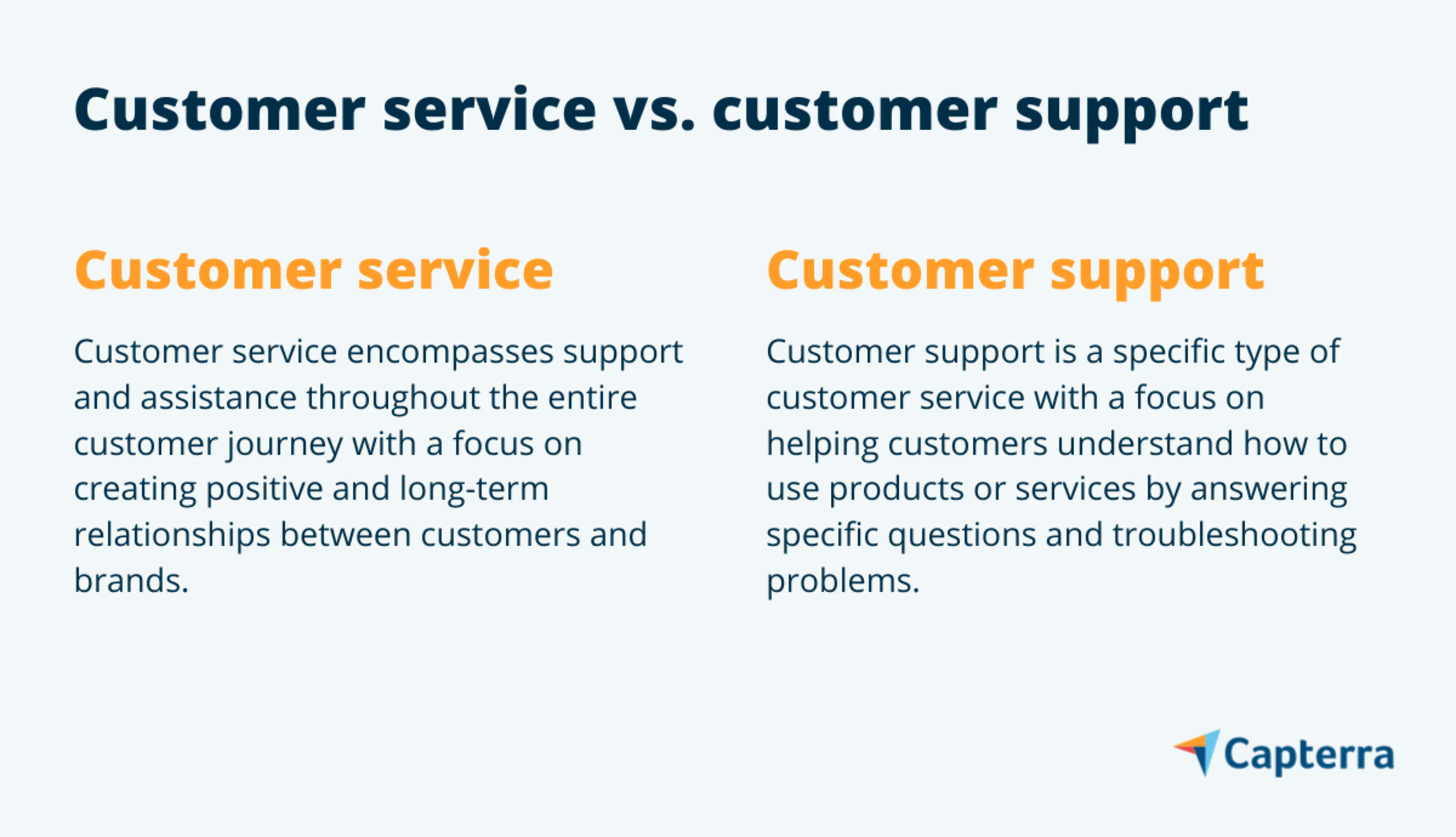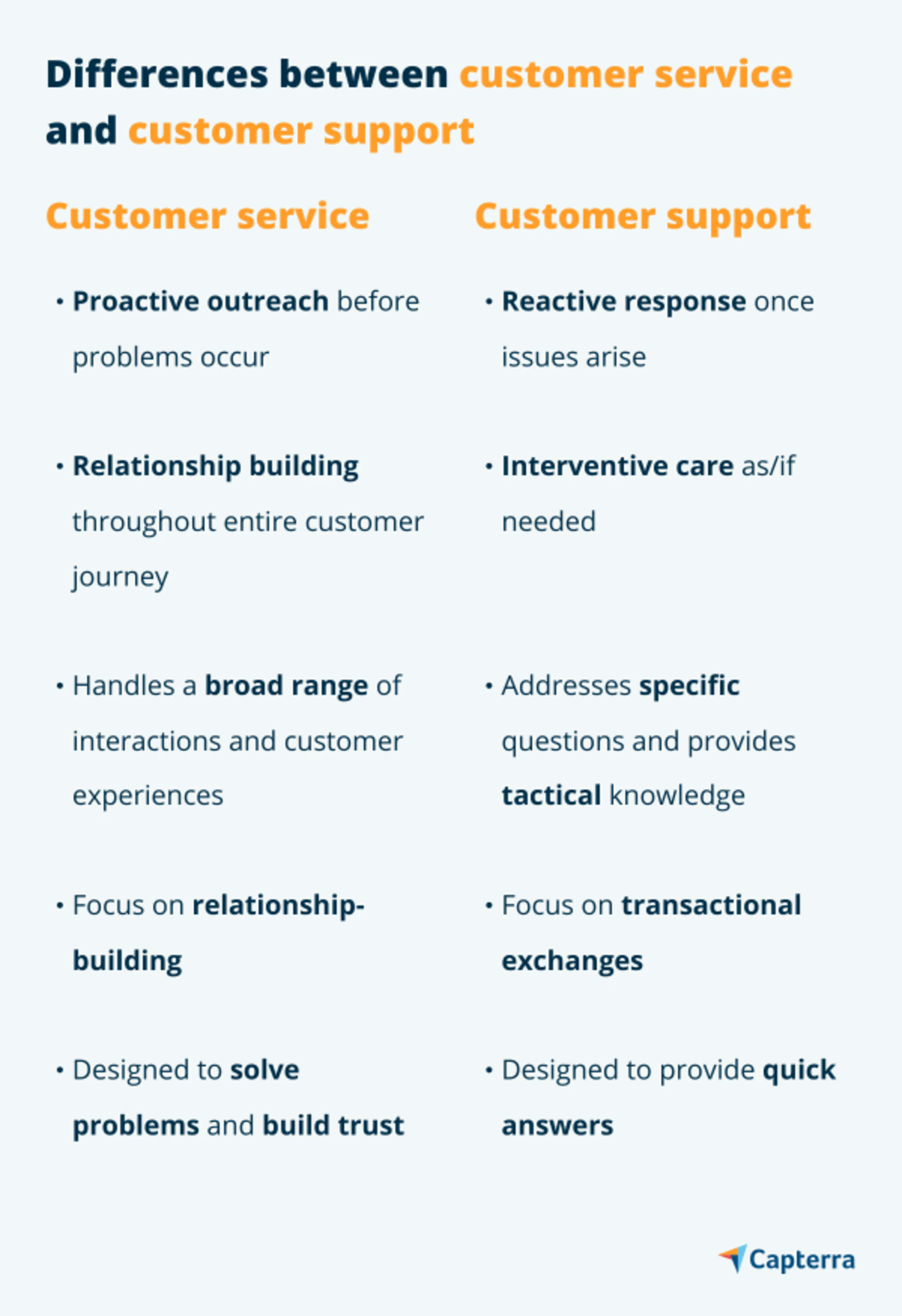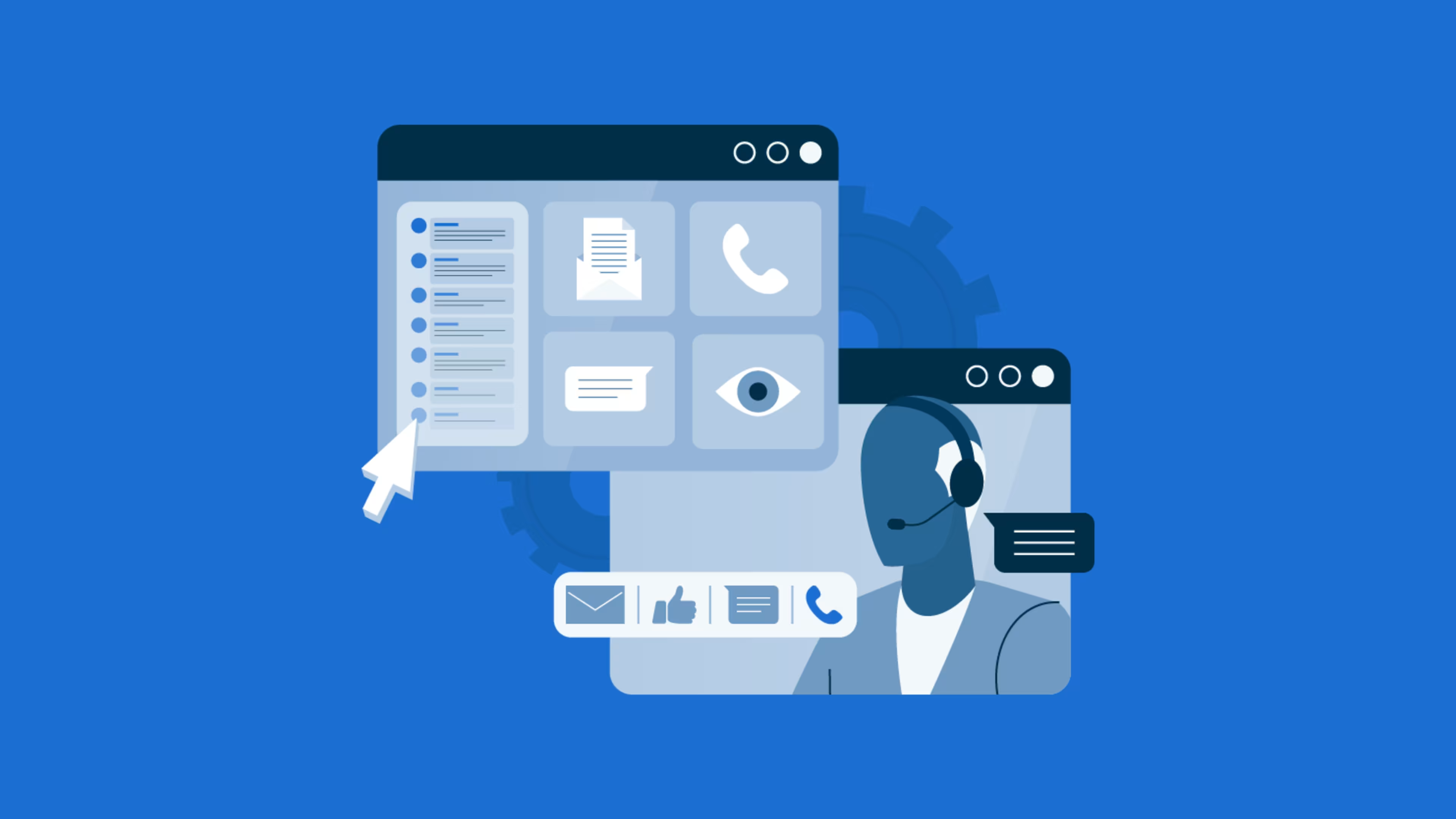Learn the difference between customer service and customer support.
A positive customer experience is paramount for small business leaders, and customer service and customer support are two important pillars of building that sentiment. However, you might be wondering about the difference between the two and how each plays a unique role in the overall customer experience.
While both aim to help customers, they contribute to a different part of the customer journey. This article will discuss the strategies for providing exceptional customer service and customer support, along with tips for improving your existing initiatives.

What is the difference between customer service and customer support? To understand the difference, it’s helpful to know they aren’t simple interchangeable terms. Customer support is a specific type of customer service, while customer service is more of an umbrella term that encompasses support and assistance both before and after someone buys your products.
What is customer service?
Customer service is the process of helping your customers before and after they buy from your business. The ultimate goal of customer service is to create a positive, long-term relationship with your brand. This can include a variety of different strategies beyond simply answering questions.
Customer service strategies
Customer service strategies can include training your support team, optimizing online help desks, creating a shared customer support vision across departments, and standardizing support processes. Other popular strategies include utilizing social media to help customers and setting up live chatbots or automatic responder messages to support after-hours.
Why is customer service important?
Sixty-three percent of business support leaders say their main priority as a department is improving operational excellence.[1] Operational excellence for support leaders means consistently delivering value, increasing productivity, and reducing overall costs. When customer service is optimized, this business function not only creates happy customers but helps build long-term loyalty and a positive reputation.
What is customer support?
On the other hand, customer support is a more specific practice of helping customers understand how to use your company’s product or service. For business-to-business services, customer support might involve implementation, training, and troubleshooting of software applications. For direct-to-consumer brands selling physical products, customer support might include answering questions about return policies or other troubleshooting.
Customer support strategies
Customer support aims to solve a buyer’s problem quickly via live chat, email, phone, social media, or in person. While traditional customer support strategies like phone and email are still effective, live chat and the use of chatbots are quickly becoming popular options for both businesses and consumers alike. According to Gartner, the customer service and support software market reached $33.5 billion in 2022, growing 13.3% year-over-year.[2] With the advancement of automation, artificial intelligence, and cloud technologies, software tools reduce some of the manual labor of customer support and help buyers receive a positive outcome faster.
Why is customer support important?
Customer support is critical because it intervenes when customers need your help. It’s a direct connection between your brand and your customer, and it’s also essential to keeping your customers coming back over time. Customer support also helps retain customers as it supports them when they need help the most. Consumers value positive support experiences, which can make all the difference in standing out against competitors.
Key differences between customer service and customer support
Both customer service and customer support have a role in your overall company strategy. However, different teams might handle these functions, and they might operate a little differently. Take a look at some key differences between customer service and customer support.

Reactive vs. proactive
Customer service is a proactive action that aims to help customers before a problem even occurs. Customer support is more reactive, with support agents answering specific questions or troubleshooting when a customer runs into an issue. For example, reactive customer support might include the live chat on your website that is only utilized when customers have a specific question.
Start to end vs. intervention
Customer service builds a positive relationship with customers across their entire journey with your business. Customer support is interventive care as needed, and customers might not ever need specific support. Customer service begins before a customer even purchases a product; for example, a potential buyer might reach out on social media to ask a question before even purchasing, and a succinct, speedy reply will set a positive tone before a purchase is even made.
Broad vs. specific knowledge
Customer service broadly encompasses a variety of positive customer interactions, support, and experiences. On the other hand, customer support aims to answer specific questions and provide tactical knowledge. For example, a customer success manager might have broad knowledge about the product or business, providing expert strategy or product answers. On the other hand, a customer support agent could assist with highly technical product troubleshooting.
Transactional vs. relationship-building
Even though it sounds like a negative connotation, customer support is ideally transactional, where a customer asks a question or needs help, and they receive what they need. Customer service aims to build a relationship based on more than transactional questions and answers over a long period.
Providing answers vs. solving problems
Customer support strategies are designed to provide quick, correct answers to customers, and live chatbots are one way many businesses offer this real-time help. However, according to Capterra’s 2023 Retail Chatbots Survey,* 55% of traditional retail chatbot users don’t trust the bots to solve problems, and 53% of consumers who have used retail customer support chatbots rate their overall experience as “fair” or “poor.”
Tips to improve overall customer service and support
Improving your overall customer experience is a team effort—from collecting customer feedback to empowering your support agency to confidently answer questions to seamlessly onboarding customers. Take a look at a few tips to improve your overall customer experience.
Standardization
Across different channels, teams, and strategies, it’s critical to deliver a consistent, standard experience for all customers and locations. This means creating formalized processes, creating a shared vision across departments, and ensuring different teams follow the same format and brand standards. For example, establishing standard processes for refunds, returns, or dissatisfied customers maintains consistency and allows all customers to have the same experience.
Embrace automation
Customer support and customer service are both time-consuming and can sometimes be heavily manual. Embracing software and automation is one way to reduce the amount of menial, repetitive tasks while also freeing up your internal team. With or without human involvement, artificial intelligence from automated customer service and support tools maintains quality while scaling. According to Gartner, more and more businesses are turning to self-service options to reduce manual labor and allow customers to assist themselves even with more complex questions.[3]
Customer service and customer support tools and services
Customer service software and help desk tools offer customers sophisticated automation, personalized experience, and omnichannel support. These tools also aggregate data and customer information, support customer content dissemination, and help support leaders execute a cohesive customer experience. For example, Gartner says that 50% of large businesses will fail to unify engagement channels through 2026, resulting in a disjointed and siloed experience.[4] Without consolidated tools and software, as businesses scale, it’s difficult to maintain high-quality support standards.
Also, outsourcing to a third-party customer support agency is a way to reduce employee costs while getting full 24/7 coverage. These reduce the need for large internal support teams and also allow for the flexibility to scale help up and down in response to seasonal demand or heavy influxes of questions. Especially if your business internally has created a shared customer experience vision and formalized these processes, it’s easier to onboard a third-party customer support agency and still make them feel like an extension of your brand.
Choosing customer service vs. customer support software
When building a customer journey and experience, it’s important to consider both customer support and customer service. Customer satisfaction is paramount to creating long-term relationships with buyers, encouraging them to purchase from your business again and again. While both pillars of customer success are important, you might want to choose a customer service or customer support platform that automates and streamlines your processes and provides 24/7 help to customers. The software will also help reduce manual, repetitive tasks, giving more time back to your team to focus on higher-level, more complex projects.
To dive deeper into customer service and support tools and build a positive customer experience, take a look at the resources below:

